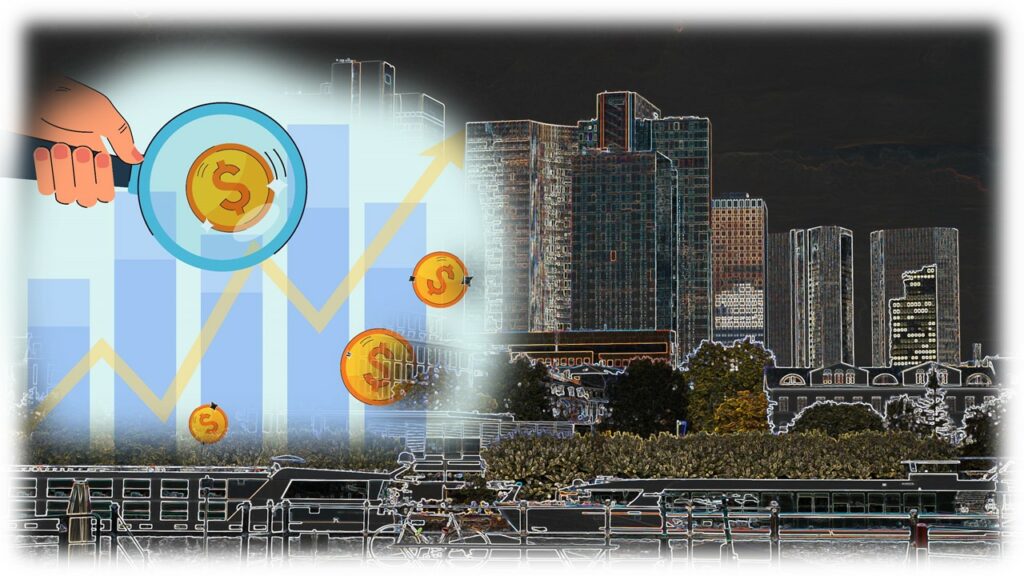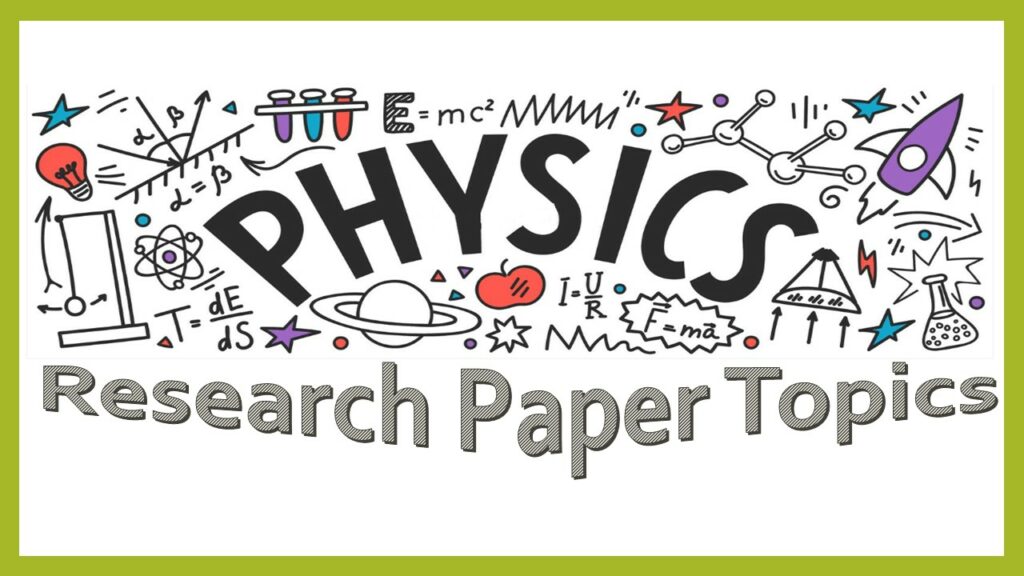Research Topics Concerning Plant Biochemistry Linked With Biotic And Abiotic Stresses
Drought Stress
- A biochemical study to determine the efficacy of plant growth promoters in the Zia mays against drought stress.
- Comparison of volatile organic compounds produced by wheat with and without the drought stress.
- Remarkable features of melatonin in improving plant growth and development under biotic and abiotic stresses.
- Alone and combined application of drought, heat, salt and frost stresses on plant and their effects on the morphological and biochemical properties.
Salinity Stress
- Insights into salt stress-induced changes in antioxidant levels in wheat.
- Effective influence of Bacillus s in maize against the abiotic stresses.
- Assessing the ionic homeostasis in aquatic plants under salt stress and its associated adaptive measures.
- The upregulation of antioxidants and the signaling mechanisms behind them resulted from combined drought and salt stress in wheat.
- Fluctuations in the level of antioxidants resulted from the plant’s encounter with air pollutants.
- Investigation of the ACC deaminase in wheat under the salinity and its prominent role in the remediation of salt stress.
- Evaluating significant efficacy of salinity remediation in the soyabean using different variants of Bacillus sp.
- Abrupt increase in the amino acid content of chickpeas in response to salt stress.
Heavy Metal Stress
- A molecular approach to unlock the heavy metal-resistant defense mechanism in rice.
- Identification of cadmium-tolerant wheat varieties and their underlying mechanisms.
- Exogenous application of organic acid in stimulating plant growth under heavy metal stress.
- Biochemical findings reveal the nickel immobilization mediated through the application of biochar.
- Evaluating proteomics protocols; an investigation of rice phenolics produced under arsenic stress.
- Upregulation of phytochelatins in the presence of mycorrhizal fungal species under the heavy metal stresses in plants.
- A novel approach to discover the leaf senescence in Arabidopsis under stress conditions.
- Identification and characterization of biomarkers linked with the abiotic stress responses in plants.
- Abrupt elevation in the protein and soluble sugars linked with the exposure of cadmium stress and the mechanistic reasoning behind it.
- Quantification of the enzyme activity and its associated biochemical measures in the maize under nickel stress.
- Investigation of the extent of lipid peroxidation in the cadmium-stressed plants.
- Development in metabolomics to better assess the survival responses of plants under heavy metals.
- Cross talk to address signaling cascades involved in the plant defense response against nickel contamination.
- Beneficial role and in-depth analysis of nitric oxide in mitigating heavy metal contamination in the plants.
- Investigating the effective ability of hyperaccumulators in remediating the uranium toxic areas.
- Identification, characterization and expression analysis of arsenic tolerant gene in bacterial strains isolated from the arsenic-contaminated area.
- A cross-talk to better identify and locate the molecular markers associated with the arsenic resistance in the rice.
- Physiological, biochemical and molecular alterations in the young seedling of Oryza sativa to combat the synergistic effects of cadmium and arsenic toxicity.
Unfavorable Conditions and Toxins
- Investigating the physiological and biochemical responses of pea plants in response to different light intensities.
- An abrupt rise in the defense mechanism of Arabidopsis linked with exposure to UV radiation.
- Investigation of unseen potential of total amino acid content for plant survival under unfavorable conditions.
- Upregulation of DNA methylation in the plants in response to the abiotic stresses.
- Identifying the enzymes responsible for the complete metabolism of xenobiotics in plants.
- Increased ability to biotransform and metabolize xenobiotics in higher organisms under the effects of plant metabolites.
- A significant role of glutathione S reductase to mitigate the effects of biocides in plants.
- Biotransformation and detoxification of xenobiotics using microbial assisted phytoremediation.
- A novel attempt to look into aerial and root-specific metabolite production in rice under stress conditions.
- The use of macrophytes in remediating metal contamination in aquatic system.
- Estimating the impacts of industrial effluents on the waterbodies and their environments.
- Detection of groundwater contamination of selenium and arsenic linked with their effects on aquatic life.
- Evaluating the dynamics of rhizobacterial species under the influences of wastewater contamination.
- Plant-mediated phytoremediation of hydrocarbons in the aquatic environment and linked soil systems.

Research Topics Concerning the Improved Nutrient and Metabolite Content in Plants
- Biochemical analysis of two variants of snow peas for lignin accumulation.
- Physiological and morphological improvement of rice attributes linked with the foliar application of salicylic acid.
- Coapplication of iron oxide nanoparticles and biofertilizers in enhancing plant growth and development.
- Differences in the archeal profiles based on the metabolic analysis under the effect of biofertilizers.
- Improved nutritional value of Luffa sp. induced by the activity of biofertilizer.
- Quantification and characterization of extracted proteins from the leaves and roots of sunflowers.
- Protein extraction and identification of bioactive metabolites extracted from seaweed.
- Evaluation of differentially expressed proteins under the effect of drought by gel electrophoresis.
- Efficient investigation of phosphorylated protein sites in the plants resulted from the coapplication of affinity and mass spectrometry.
- Investigating the molecular and biochemical basis of gibberellin, auxin and cytokinin transport in the Luffa sp.
- Biochemical-based effectivity activity of phenols and flavonoids in the plants.
- Biochemical activity of flavonoids extracted from plants and their significant role as a dietary compound.
- Biochemical basis and the reasons underlying the health benefits linked with the dietary compounds synthesized in plants.
- Evaluation of electrochemical and biochemical attributes linked to the production of phytochemicals in the wild-type plant species.
- The significant ability of Moringa oleifera plant to be used as a poultry supplement based on its effective metabolite production.
- A nutritional comparison between two vegetables based on molecular techniques.
- Physiological and biochemical assays to investigate the improved characteristics of sugarcane treated with melatonin.
- The application of fulvic acid enhances the growth and development of plants associated with enhanced nutrient uptake.
- Effects of soil moisture on the plant growth and variations in the photosynthetic pigments due to different water levels.
- Impact of exogenous application of hydrogen sulfide on the growth and yield quality of cherries.
- Identifying the variations in the morphological traits of the plant resulted from the impact of growth regulators.
- Increase in the proline content of plants under the abiotic stresses and investigation of genes involved in them.
- The prominent role of cow dung and its microbial profiling to identify the novel microbe for plant growth and development.
- The isolation and characterization of novel bacterial isolates isolated from the industrial effluents.
- Production of systemically tolerant maize plants based on mycorrhizal species in relation to the action of salicylic acid.
- GC mass spectrometry analysis of plant metabolites extracted from the leaf fractions of Moringa oleifera.
- Cross talk to investigate the potential of methyl jasmonic acid and oxalic acid and a prediction of underlying growth-enhancing mechanisms.
- Enhanced nutritional attributes of maize plant linked with the seed priming with Azobacter.
- Extraction, purification and characterization of effective secondary metabolites in the leaf extract of Luffa acutangula.
- Phytochemical, physiological and biological attributes of plant metabolites linked with efficient growth and development.
- Biochemical evaluation of phenylalanine and polyphenol oxidases regulation in the root nodules of plants.
- Generation of redox active compounds in response to magnesium deficiency in the plants.
- Proteomic correlative pathways in the chickpea-based on the graph clustering method.
Research Topics Concerning the Medicinal Features of Plants
- Detailed analysis of defense response mediated through microbial consortiums in sugarcane.
- Exploring the synergistic and antagonistic effects of microbial communities isolated from various rhizospheric soil samples of medicinal plants.
- Prominent effects of oxalic acid in mediating the defense mechanisms through the enhanced production of antioxidants.
- The positive ability of Jacaranda mosifolia to produce antioxidants, antimicrobials and cytotoxins through its leaf extracts.
- Chemical botanical attributes are promoted by the induction of proteins responsible for pathogenesis.
- Biochemical and physiological profiling of leaves extracts of Asaragaceae sp. to check their ability for being used as a medicinal plant.
- Changed in the antioxidants, and biochemicals attribute, depicting the significant rise in defense mechanism under the effect of zinc oxide nanoparticles in plants.
- A medicinal approach to unveil the health benefits of Moringa oleifera and its nutritional benefits.
- Investigating the medicinal potential of Pueraria lobata based on the estimations of its antioxidant attributes.
- Extraction of a novel compound from Moringa tinctoria root and its significant effects on carbohydrate metabolism.
Research Topics Concerning Genetic and Signaling Cascades Behind the Plant Functioning
- Change in the physio-morpho-biochemical features of wheat and alteration in the gene expression associated with it.
- Differential expression of genes involved in mitigating abiotic stresses and the metabolomic study.
- A molecular-based detailed analysis of temperature-mediated genetic alterations in the wheat.
- The impact of biotic stresses in plants and its effects on the signaling cascade of cytokinin.
- Evaluating the genetic and epigenetic alterations in Arabidopsis under severe heat shocks.
- Discovering the protein channels at the molecular level associated with the stress resistive mechanisms in the plant.
- A detailed meta-analysis and the identification of transcriptional markers present in the medicinal plants’ species.
- Biochemical and physiological mechanisms behind the transgenic plants showing better growth and survival under abiotic stresses.
- Biochemical and genetic analysis of the pathways involved in the generation of antioxidant enzymes in wheat.
- Genetical changes resulted from the combined effect of heat and drought stress in the plant and the prediction of its solution.
- Investigation of the functional protein cascade involved in the defense mechanism of Arabidopsis revealed through biochemical and proteomic analysis.
- Absolute transcriptomics inspection to reveal the growth regulation in the plants.
- Production of transgenic plants to better cope up the pathogenic infection based on the divergent selection of gene clusters.
- Identification of effective genetic markers and construction of maps; an innovation in plant breeding techniques.
- Insights into the genetic makeup of plants and prediction of signaling cascade to find its adaptative features.
- Investigating the efficacy of microsatellite markers to better analyze the genetic attributes in wheat.
- Biochemical and genetic analysis of mechanisms lying behind the effective remediation potential of spermidine to enhance plant development and growth.
- Structural analysis of the Aox1 gene based on the alterations in the transcription and expressional processes in plants.
- Molecular analysis to investigate the activation of acetyl CoA in plants based on the enhanced AccD gene transcription and expression.
- Variation in the allelic gene expression associated with the different environmental conditions.
- Insights into genome editing based on CRISPR to combat heavy metal toxicity.
- Genotype analysis of barley using the microsatellite DNA markers.
Research Topics Concerning Nanotechnology and Biotechnology
- Efficacy of green synthesized nanoparticles in promoting plant growth under biotic and abiotic stresses.
- A significant role of microalgae in the bioproduction of bioethanol using technical approaches.
- Green synthesis of zinc oxide nanoparticles using papaya plant; an eco-friendly approach.
- Molecular analysis of underlying stress mediating efficacy of metal oxide nanoparticles.
- Analyzing the biochemical traits and growth promotion in maize attributed due to the activity of titanium oxide nanoparticles.
- Investigating the molecular processes behind the DNA repair in producing the tolerant plant species.
- Green synthesized gold nanoparticles and their antifungal, antimicrobial and medicinal roles.
- Synergistic ameliorative effects of biofertilizers and nanoparticles for better plant growth, development and yield.
- Generation of resistive plant species using tolerant genes from the microbes based on PCR technique.
- Application of silicon nanoparticles along with oxalic acid as a chelator to cope up drought-induced leaf senescence in wheat.
- Significant amelioration of Avian colibacillosis infection mediated through the combined effect of metal oxide nanoparticle and mycorrhizal species.
- Remarkable potential of CRISPR-CAS concerning the advancements in plant breeding.
- Comparative analysis to unleash the efficacy of crop halophytes; an eco-friendly protocol.
- Advancement in the generation of fermented pheromones to deal with pest problems.
- Evaluation of the efficiency of crop rotation to combat Fusarium head blight in barley and wheat.
- Molecular analysis to investigate the reasoning behind glyphosate tolerance in plants.
- Advantages of high-resolution nuclear magnetic resonance spectroscopy to run physiological analysis in plants.
- In-depth study of salinity-mediated metabolomic and proteomics analysis of wheat roots and leaves.
- Biochemical and HPLC chromatography of phenolic compounds extracted from the tobacco plant.
- Identification and characterization of calcium-binding proteins in maize whole grains.
- Investigation of IgE-linked proteins in the plants and their associated signaling pathways.
- Detection and exploration of protein-protein relations in the membrane-bounded protein complexes of Moringa oleifera.
Research Topics Concerning Microbiology Including Bacterial and Fungal Strains
- Assessing the biochemical traits of isolated bacteria from the root nodules of the plant.
- Antagonistic and synergistic effects of multiple plant growth promoters under field trials.
- Improved chlorophyll content and level of antioxidants in the plants through the combined activity of fungus and bacteria.
- Unraveling the molecular mechanisms behind the fungal mediated plant growth and development.
- Improved plant yield under the effect of Azospirillum sp.; a significant step to uncover the functions behind it.
- Exploring the antagonistic ability of Pseudomonas sp. against fungal strains in regulating plant development and growth.
- Efficient remediation of salt stress induced in the maize under the effect of different mycorrhizal fungal species.
- Co-effect of biofertilizer and mycorrhizal fungal increases the survival rate in salt-stressed plants.
- Changes in the level of secondary metabolites and phytohormones resulted from different antifungal and antimicrobial treatments.
- Improved soil characteristics after the co-application of microbes and fungal strains against the heavy metal stress.
- Isolation, characterization and biochemical of soil microbes to address their plant growth-promoting abilities.
- Antifungal and antimicrobial properties of tea tree oil and biochemical mechanisms behind.
- Efficacy of tea tree oil in treating skin infections against the fungal species.
- Promising features of Moringa oleifera based on its significant antibacterial characteristics.
- Elimination of leaf rust disease using effectively isolated bacteria from the soil samples.
- Advancements in the discovery of molecular markers associated with the wheat rust disease.
- A novel approach to find the genetic diversity in plants based on the molecular markers.
- Advancements in the identification and designing of molecular markers to detect the yellow rust disease in plants.
- Rapid production of antioxidant and root-associated exudates in maize under the Fusarium
- A comparative analysis to determine the better efficacy of chemical and green synthesized fertilizer in response to fungal infection in barley.
- Nuclear magnetic resonance study to identify the membrane interactive protein complexes in different varieties of Arabidopsis thaliana.
- Upregulation of citrate and malate biosynthesis in plants linked with the usage of biofertilizer assessed through NMR study.
- Significant rise in the auxin biosynthesis enhances the citrate exudation in plant roots; a biochemical analysis.






